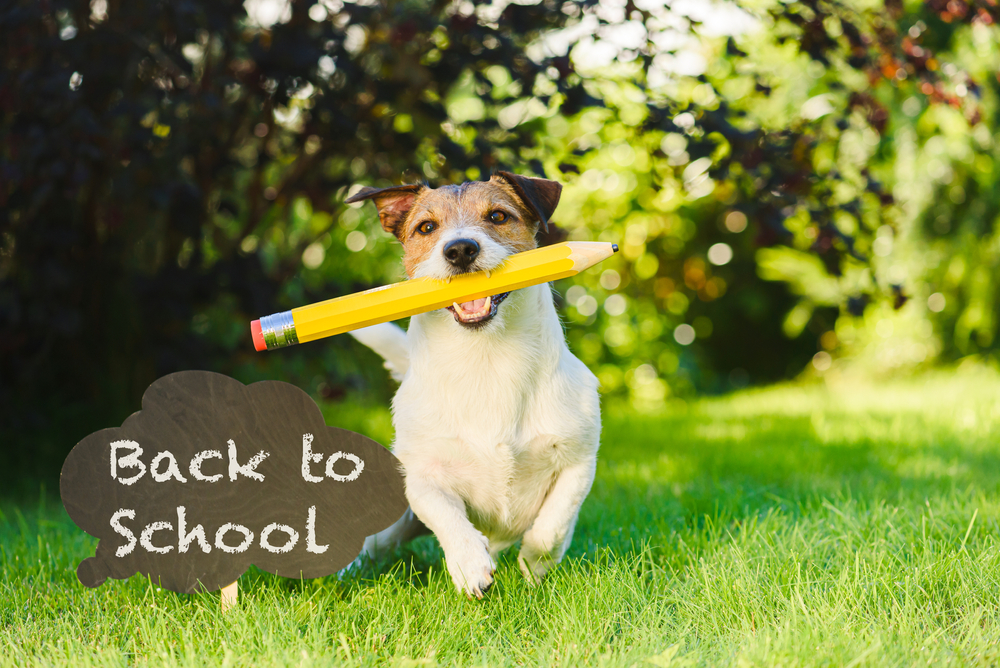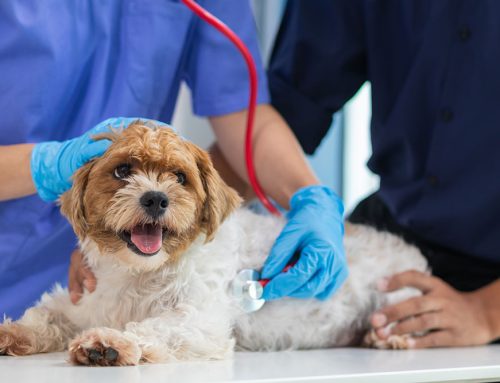Pets thrive on predictability, and your pet has no doubt become used to—and loves—their summer routine of late nights, sleeping in, a different meal schedule, and plenty of time with the family. Now that a new school year is here, your pet will need to transition into a new routine, and they will adapt more easily if the changes are introduced gradually, beginning several weeks before the first day of school to give the whole family time to adapt. Our team at Liberty Veterinary Hospital has four tips that will help ensure a smooth back-to-school transition.
#1: Increase your pet’s time alone
Suddenly being forced to spend more time alone after the family heads out the door for school and work can be challenging for pets who have become used to tagging along all summer. Start by leaving your pet home alone for short periods of time during the weeks leading up to school to help them adjust to your absence. Resist making a fuss when you leave and return, which can make your pet feel more anxious and stressed. Quietly say “Good-bye” when you leave, and greet your pet after you return only when they are calm.
#2: Walk your pet before your leave
Your pet needs daily exercise more than ever during this transition, and walking them in the morning before you head out the door will leave them tired and relaxed. If you don’t have time for a walk, play a game of fetch before leaving—anything that gets them moving to release pent-up energy. A tired pet is more likely to take a long nap while you’re away than engage in destructive behavior.
#3: Keep your pet busy while you’re away
Your pet will get bored alone in a quiet, empty house all day, so ensure you provide them with mental stimulation. Consider the following:
- Turn on the television — Leave on the television during the day. Some channels now cater specifically to pets, who will be entertained by what they see on the screen and calmed by the background noise.
- Leave tasty treats — Stuff a durable chew toy with xylitol-free peanut butter, freeze overnight, and leave for your pet as you head out the door. They will be distracted for hours trying to reach every last delicious dollop.
- Send your pet on a hunt — Play into your pet’s natural hunting instinct by leaving a food puzzle or scattering small piles of kibble around your house. Do this right before you leave, so your pet learns to associate your leaving for the day with a positive activity.
- Hire a pet sitter — If your pet is going to be home alone for more than four to six hours, you should consider a pet sitter who will socialize and exercise your pet.
- Bring your pet to doggy daycare — If your pet is well-socialized and enjoys the other animals’ company, they likely will enjoy doggy daycare and spending their day playing with other pets, supervised by trained staff.
- Schedule playdates for your pet — Ask friends, family, or trusted neighbors with pets to take your pet for occasional playdates.
#4: Avoid a back-to-school pet emergency

Back-to-school time is already stressful, and the last thing you want is a pet emergency. Avoid a trip to the emergency veterinary hospital with these safety tips:
- Keep backpacks and lunch boxes out of reach — The food in backpacks and lunch boxes can be harmful to pets. Ensure your kids hang backpacks on hooks out of your pet’s reach, and remind them to empty their lunch boxes promptly when they get home to avoid foraging pets.
- Choose non-toxic school supplies — Buy school supplies with the letters AP (i.e., approved product) on the label that designate the items as non-toxic. Most products intended for children have this seal and are non-toxic for both children and pets.
Some pets really struggle when left alone and may develop separation anxiety, with signs that include excessive barking, destructive behavior, or escape attempts. Contact our Liberty Veterinary Hospital team, and let us help them beat the back-to-school blues.








Leave A Comment